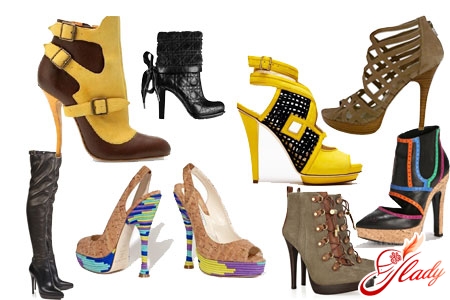 History shows how long ago it was inventedfootwear. Several tens of thousands of years ago, Homo sapiens understood that life is not sweet without clothes and footwear. Scientists express the opinion that the very first models of footwear were peculiar foot wraps made from bear skin. Inside, such footwear was insulated with dried grass, unfortunately, we will never be able to find out whether this is really so, because not a single pair has survived to our times. The inhabitants of Ancient Egypt wore
History shows how long ago it was inventedfootwear. Several tens of thousands of years ago, Homo sapiens understood that life is not sweet without clothes and footwear. Scientists express the opinion that the very first models of footwear were peculiar foot wraps made from bear skin. Inside, such footwear was insulated with dried grass, unfortunately, we will never be able to find out whether this is really so, because not a single pair has survived to our times. The inhabitants of Ancient Egypt wore, which were made from palm leaves, toThey were attached to the feet with special leather straps. Wealthy Egyptians decorated their straps with unusual patterns and various precious stones. The Jews who lived in ancient times wore more practical shoes, for their manufacture they used the best leather, wool, reed and wood. The ancient Greeks could boast of half-boots with backs, as well as elegant women's boots with lacing. Boots without a toe, created in Greece, have survived to this day, many modern fashionistas today flaunt such unusual shoes. It is to the Greeks that we all owe the fact that different patterns are used to make one pair of shoes. There is a version that the craftsmen were prompted to do this by courtesans. The Romans wore two types of shoes - shoes that covered the entire foot and sandals that covered only the sole, they were attached to the foot with straps. Shoes for women were made only in white, and for men - in black. On very big holidays, the Romans allowed themselves to wear scarlet shoes, which were often decorated with pearls and beautiful embroidery. The Scythians wore very soft boots, which can be called a work of art. High boots, more like a leather stocking, had mosaic tops. Above the boots were belts that covered the foot and ankle. Shoes for women were made of the finest red leather, after which they were decorated with an ornament. The originally decorated sole of women's shoes still surprises everyone who has seen it. Leather, beads and sinew thread - these are the materials with which craftsmen decorated the sole of women's shoes. Shoes were popular in medieval Europe. The fashion of that time prescribed hanging bells on the upturned toe of the shoe. The length of the shoe could be used to judge how noble its owner was. The longer the shoe, the higher the title of its owner. That is why many princes tied the bent toe of their shoes to their feet with a string. Otherwise, they would have to stumble with every step. Author:

Making Money with Desserts: Success Stories
Evgeniya Polischuk (Fedutinova) instagram:@evgeniyafedutinovavk.com/janeshomebaking– It all started with baking for family and friends. Gradually, I started posting photos of my baked goods on Instagram – and orders started coming in. I made my first custom-made cake on October 13, 2014, and a little earlier I started making macaroons and cupcakes. You could say that the business “found me”, I am very […]

Soups are cold recipes with photos
Cold cucumber soup with yogurt and lemonsorbet from the chef of the restaurant La Taverna Alexander Zhurkin Photo: Getty Images Ingredients: Plain yoghurt – 125 g Cucumber – 150 g Lemon/lime sorbet – 50 g Cocktail shrimp – 24 g Fresh ginger juice – 1 g Lime juice – 5 g Fresh orange juice – 5 g Parsley – 1 g Pink pepper – 1 g Watercress – […]

barbeque kebab
Pork tenderloin in glaze Photo:Dmitry Bayrak/dbstudioPreparation time: 20 minutes + marinating time.Calories: 454 kcal per serving.For 4 servings: 4 pork tenderloins (approximately 300 g each), 1 onion, 2 cloves of garlic, 1 tsp. lemon zest, 1 tsp. lemon juice, a pinch of ground cumin, coriander and turmeric, 1 tbsp. vegetable […]

Pierre Duacan: dietary recipes: Ducane diet
Beetroot soup Photo:Season’S, Luxury Hotels RepresentationYou will need:· Boiled beetroot – 60 g· Fresh cucumbers – 20 g· Red radish – 20 g· Green onions – 10 g· Egg – 1 pc.· Drinking mineral water – 200 g· Salt – 1 gPreparation:· Boil the egg and beetroot.· Grate the cucumbers, radish and part of the beetroot. Put everything […]


